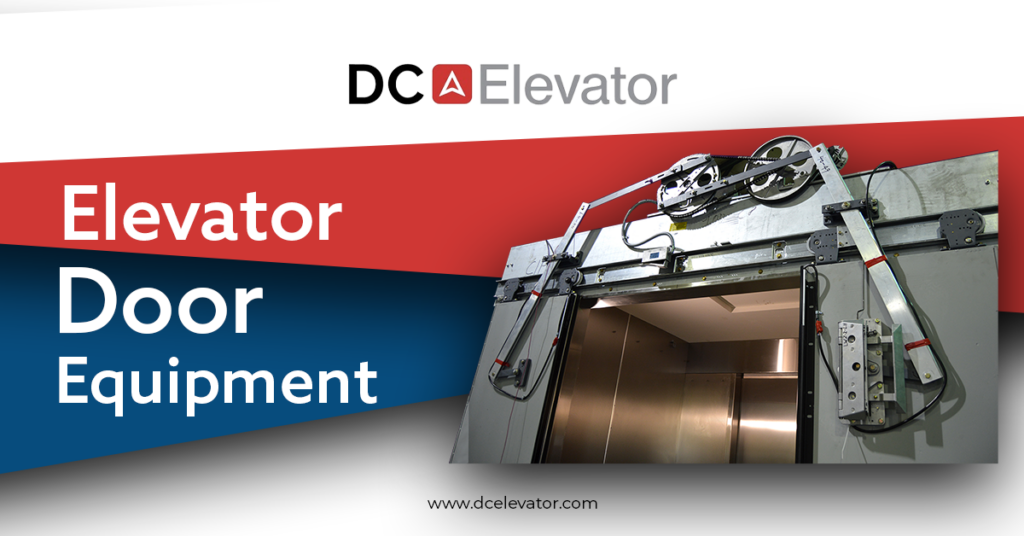How Elevator Doors Work
If elevators could sweat, most of it would drip from the doors. The doors are definitely the hardest working part of the elevator. Each and every time the elevator stops at a floor, a car door and hatch door need to open and close efficiently without complaint. This hard working assembly averages 100,000 cycles (open and closes) per year according to major door manufacturers.
That produces a lot of wear and tear on the equipment that opens and closes the doors, especially if it is not properly maintained. As a result, elevator doors are the cause of over 70% of all service calls.
Types of Doors
There are several different kinds of doors. They are usually described by the number of panels the door has, and range from single panel to four panel. The panels recess to the side when open, so the car must be at least twice as wide as the door to allow the full recess. If more door width is needed than the car provides, then multiple partial-width panels are used. They telescope together when open, so a 48” 2-panel door only needs a 24” recess.
The panel furthest from the edge where the door closes moves the slowest. The leading panel moves faster to “Catch up” when opening, so that all panels hit the fully recessed position at the same time. While there is a single door on the car that travels with it, every stop has a door called a hoistway or hatch door that keeps people from falling into the hoistway when the car is not there. These hatch doors must open and close at the same time that the car doors do.
How the Doors Operate
Of course there is an electric impulse from the elevator controller (the brain of the elevator) that causes an elevator door to open and close when the car is safely at the proper floor; however, most action in the door’s operation is mechanical.
The car top houses a machine called the door operator. When the car and hatch doors are lined up, a clutch on the back side of the car door slides down (or up) over pickup rollers on the back side of the hatch doors. The operator then drives the car door open, engaging the pickup rollers and taking the hatch door with it. To close, the operator drives the car door closed, pulling the hatch door along.
When the equipment is adjusted correctly, the opening and closing process is smooth and unnoticeable. However, when there are problems, it becomes very noticeable, such as doors not opening all the way or at all. These problems are usually caused by misalignment of the clutch, pickup rollers, and linkages, which can be corrected by adjusting them. The nylon or rubber wheels running along the overhead track and gibs at the bottom of the door can also cause problems if they are worn or obstructed, making the opening and closing of the door squeaky, grinding, bumpy, or preventing it from opening or closing. Misalignment caused by vandalism or forceful opening of the door can also cause the door to bind when opening.
The elevator controller signals an electric motor to activate, which moves arms attached to the door and opens it. The speed of the doors can be adjusted by a technician. The belts or chains that drive the door operator need to be changed every few years due to wear and tear. It is important to regularly inspect and maintain the elevator’s moving parts to prevent potential breakdowns, such as cleaning the tracks and sills and inspecting the rollers and linkages. If there is a problem with the elevator doors, it is essential to call a technician for safety reasons. With consistent maintenance by a certified technician, the elevator will continue to operate well for an extended period.
